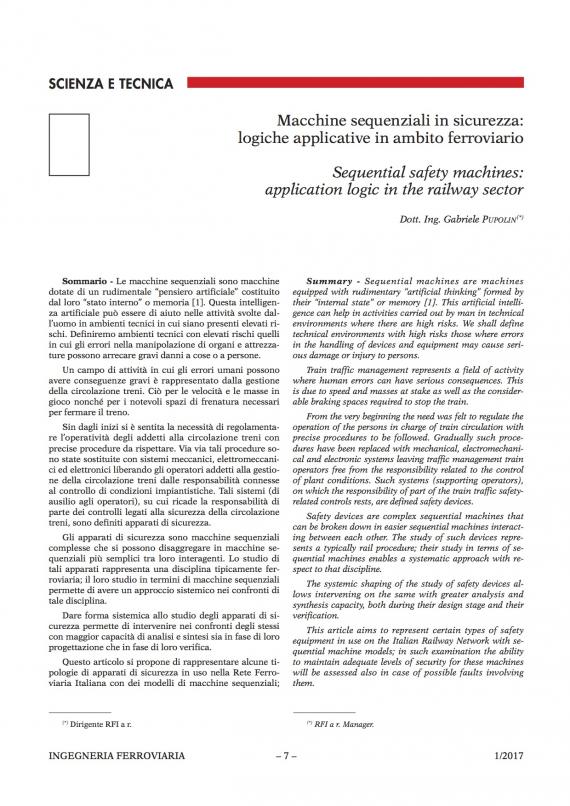
Summary - Sequential machines are machines equipped with rudimentary “artificial thinking” formed by their “internal state” or memory [1]. This artificial intelli- gence can help in activities carried out by man in technical environments where there are high risks. We shall define technical environments with high risks those where errors in the handling of devices and equipment may cause seri- ous damage or injury to persons.
Train traffic management represents a field of activity where human errors can have serious consequences. This is due to speed and masses at stake as well as the consider- able braking spaces required to stop the train.
From the very beginning the need was felt to regulate the operation of the persons in charge of train circulation with precise procedures to be followed. Gradually such proce- dures have been replaced with mechanical, electromechani- cal and electronic systems leaving traffic management train operators free from the responsibility related to the control of plant conditions. Such systems (supporting operators), on which the responsibility of part of the train traffic safety- related controls rests, are defined safety devices.
Safety devices are complex sequential machines that can be broken down in easier sequential machines interact- ing between each other. The study of such devices repre- sents a typically rail procedure; their study in terms of se- quential machines enables a systematic approach with re- spect to that discipline.
The systemic shaping of the study of safety devices al- lows intervening on the same with greater analysis and synthesis capacity, both during their design stage and their verification.
This article aims to represent certain types of safety equipment in use on the Italian Railway Network with se- quential machine models; in such examination the ability to maintain adequate levels of security for these machines will be assessed also in case of possible faults involving them.
- Gennaio


